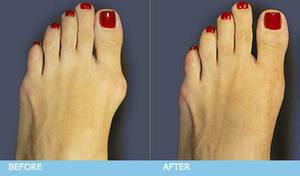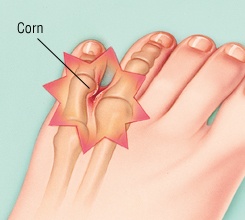Toe Deformities & Surgery Options
When all other treatment options fail to fix your toe deformities, surgery is the last option. Most doctors will exhaust all other treatment options before even suggesting it because surgery is expensive, recovery times vary, and there is no guarantee of a permanent fix. Insurance plans also rarely cover toe deformity surgeries, since fixing a crooked toe or bunion is seen as a cosmetic issue, not a health problem.
Today we’re going to look at 3 common toe surgeries: bunion removal, corn/callus treatment, and hammertoe correction. In addition to briefly explaining how each surgery works, we’ll also look at more practical matters like cost and recovery time. This way, you can make the best decision for your situation and budget.
Bunion Removal Surgery
 Having a bunion removed is a complicated surgical procedure, and the method used will vary depending on how bad your bunion is. In some cases, the doctor will merely create an incision on the side of the foot, then dislocate the joint where the bunion is located and re-set it.
Having a bunion removed is a complicated surgical procedure, and the method used will vary depending on how bad your bunion is. In some cases, the doctor will merely create an incision on the side of the foot, then dislocate the joint where the bunion is located and re-set it.
For more severe cases, they may need to insert pins or screws to keep the bones in place while healing or permanently. If there is extra bone that needs to be removed, they may shave that down as well. Because bunion surgery is dependent on a lot of variables, the cost and recovery process are different for each person. Before considering this option, make sure your doctor has done a thorough examination of the foot, and knows what their surgery plan will be.
Average Cost:
Average Recovery Time:
6-8 weeks
Insurance Coverage:
Bunion surgery is sometimes partially covered by insurance, with a 10%-50% copay. It is rarely covered fully by insurance plans – only in the event that a bunion is causing severe pain or inability to walk on your own. Most often, it is considered a cosmetic procedure rather than a necessary one, so getting it fully covered is unlikely.
Corn & Callus Removal
 Having a corn or callus removed by a doctor is uncommon, but there are instances where it is necessary or preferable to get a doctor involved. If you have a medical condition that makes treating corns and calluses at home dangerous, it’s a good idea to have a doctor handle it for you. The doctor will scalpel or shave off the corn or callus for you, and can prescribe antibacterial creams or other treatments to prevent further problems or infections.
Having a corn or callus removed by a doctor is uncommon, but there are instances where it is necessary or preferable to get a doctor involved. If you have a medical condition that makes treating corns and calluses at home dangerous, it’s a good idea to have a doctor handle it for you. The doctor will scalpel or shave off the corn or callus for you, and can prescribe antibacterial creams or other treatments to prevent further problems or infections.
If you are concerned about pain, and are willing to pay for it, they may also administer local anesthesia. If your corns or calluses are caused by toe deformities, your doctor may also recommend having them fixed to prevent future corns and calluses.
Average Cost:
Average Recovery Time:
Varies depending on size and location on your foot. You should be able to walk on it right after treatment, but you’ll need to keep the area bandaged and clean until fully healed.
Insurance Coverage:
Insurance providers rarely cover corn or callus removal, as it is considered a purely cosmetic problem. You may be able to get it covered if you have a medical condition that makes treating or removing corns or calluses on your own dangerous, like diabetes, hemophilia, or other disorders that affect blood flow to the feet.
Conclusion
After looking at 3 common surgical procedures to fix deformed toes, it’s clear that the old adage is right – prevention is the best medicine! All of these problems could easily be prevented, or treated at home if dealt with early on. Having surgery to fix a bunion, corn, callus, or hammertoe can set you back thousands of dollars, and they are often not covered by health insurance. The recovery times on these procedures can take weeks or months to heal, and require the use of special footwear, crutches, pain medication, and frequent follow up appointments to heal properly.
So instead of waiting until you need surgery, it’s best to try to prevent these problems from the start by wearing properly-fitted footwear, using insoles, or doing nightly stretches and at-home treatments.
